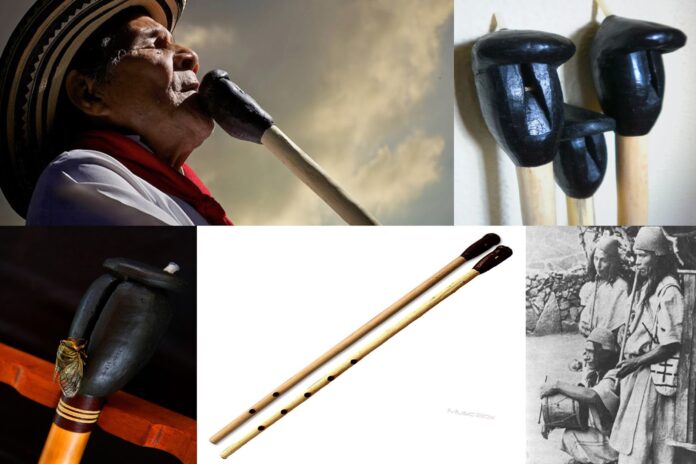El Kuisi o Gaita Colombiana es un instrumento musical típico del folclor colombiano tiene sus orígenes en las etnias indígenas koguis y los Arhuacos de la Sierra Nevada de Santa Marta, es utilizado en diferentes ritmos musicales que están englobados en la denominada “Música de gaita”, entre los que podemos encontrar el porro, la cumbia, el merengue, la puya, la gaita instrumental, etc.
El Kuisi es un instrumento de gran importancia en la música tradicional colombiana convirtiéndose en parte esencial de la identidad de la misma, su papel en casi todas las variaciones musicales tradicionales de la costa caribe es única, su sonido que endulza la melodía y acompaña al cantante de forma tan armónica tanto en la cumbia como en el porro deja ver su capacidad de adaptarse de forma tan flexible a cada genero.
Clases de Gaitas:
Existen tres variaciones o clases de gaitas cada una con un papel único a la hora de ser ejecutadas: La Gaita hembra (kuisi bunsi en dialecto kogui): Tiene de 5 orificios, proporciona la melodía; La Gaita macho (kuisi sigi en dialecto kogui): Tiene dos orificios digitales y acompaña a la gaita hembra; La Gaita corta: Tiene seis orificios, esta suele tener una tesitura relativamente más amplia. Es utilizada como instrumento solista. Llamada también “machiembriá”, “machiembriao” o requinto. (Lea También: El Sombrero Vueltiao un gran símbolo cultural colombiano)
Construcción o elaboración de la Gaita:
Tradicionalmente el tamaño de esta es definida por la longitud del brazo de artesano constructor, así que esta suele tener entre 70 a 80 centímetros de largo; entre los Koguis son de hasta dos pies, o 60 centímetros, de largo y las hace de carrizo el mismo gaitero (nunca una mujer), La longitud se mide como 3 veces la expansión entre el pulgar extendido y el meñique más la extensión entre el pulgar y el índice. Luego los orificios se hacen con una distancia entre ellos medida por el ancho de los dos dedos más la mitad del ancho del pulgar. Se hacen de un cactus al que se le quitan las espinas. Se le saca el centro, humedeciendo primero y luego perforando con una varilla de hierro. El tallo del cactus es más grueso en uno de sus extremos, este irá arriba acoplado con la cabeza de cera de abejas que lleva la pieza de pluma de ave. Aunque el instrumento es levemente cónico por fuera, su perforación es cilíndrica.
La kuisi bunsi tiene cinco orificios, La pieza bucal, una púa hecha de una pluma de ave grande, se incrusta en la cabeza con un ángulo y distancia del filo de la columna de aire, lo cual varía de instrumento a instrumento.
El siguiente video es una canción donde la gaita es la protagonista:





